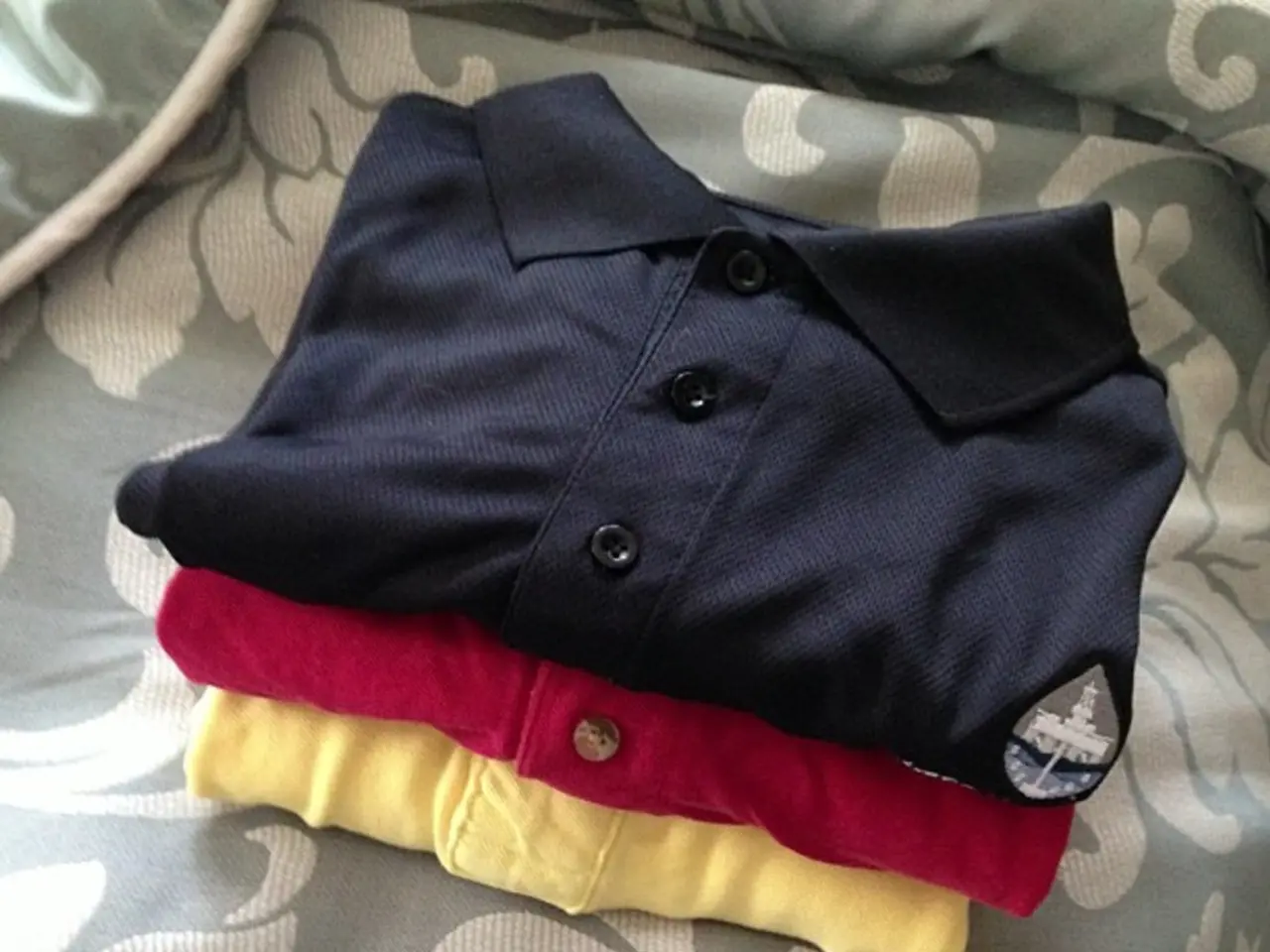The environmental impact of buying used clothing: A closer look
The Rise of Sustainable Fashion: The Used Clothing Market Outpaces Traditional Retail
The used clothing market is rapidly gaining traction, outpacing traditional fashion retail in growth and profitability, and offering significant environmental benefits.
Executive Vice President of WD Partners, Lee Peterson, has expressed concerns that the industry's shift towards sustainability might take longer than the planet can afford. However, the numbers suggest otherwise. The global apparel re-commerce market is projected to reach an astounding $1184.2 billion by 2034, growing at a CAGR of 23.9% from 2025 to 2034 [1]. This is in stark contrast to the fast fashion market, which is projected to grow at a slower pace, reaching about $152 billion by 2033 [5].
The secondhand apparel market is expected to grow 2.7 times faster than the overall apparel market through 2029 [3]. This rapid growth and rising consumer interest in sustainability indicate higher profit potential in used clothing, supported by lower costs related to production and inventory compared to traditional new garment retail [4].
ThredUp's President, Anthony Marino, believes that it will take time to change consumer behavior regarding fashion consumption. His statement, "Our mission is to inspire a new generation of shoppers to think secondhand first," reflects this sentiment [6]. ReCircled, another player in the used clothing market, initially a resale platform, has now shifted focus to recycling due to the low percentage of used clothing that can be resold.
Consumers view buying used items as environmentally friendly. If every consumer bought just one secondhand garment instead of a new one, it would lower CO2 emissions by more than 2 billion pounds, equivalent to taking 76 million cars off the road for a day [7].
ReCircled repurposes most of the used garments it takes in, using some for manufacturing yarns and the majority for building materials and home goods like clothes hangers. The company's strategy is to start with the end in mind, which is no landfill, and work backwards from there [8]. ReCircled's hangers are 90% textile waste, according to CEO Scott Kuhlman [9].
Brands like H&M and Lululemon are also jumping on the sustainability bandwagon, touting their resale programs as key to their sustainability goals. However, Kuhlman believes that resale has a small role in improving the apparel industry's environmental record.
Despite the challenges posed by the industry's massive size and ingrained practices, the shift towards sustainability is undeniable. The number of times a garment is worn has declined by nearly 40% since 2007, and the industry is making strides in reducing its environmental footprint. The used clothing market, with its potential for profitability and environmental benefits, is set to play a significant role in this shift.
[1] Statista (2022) Global second-hand clothing market - Statista.com [2] Ellen MacArthur Foundation (2021) Circular Fashion: A Systemic Approach - Ellenmacarthurfoundation.org [3] Thredup (2021) The Rise of Resale - Thredup.com [4] McKinsey & Company (2020) The circular economy in fashion: A path to a sustainable future - McKinsey.com [5] Statista (2022) Fast Fashion Market Size - Statista.com [6] Thredup (2021) Anthony Marino - Thredup.com [7] ReCircled (2021) Impact - Recircled.co [8] ReCircled (2021) About - Recircled.co [9] ReCircled (2021) Impact - Recircled.co
- The used clothing market's growth surpasses that of traditional fashion retail, with a projected value of $1184.2 billion by 2034, offering significant environmental benefits.
- Despite concerns from industry executives, the global secondhand apparel market is expected to grow 2.7 times faster than the overall apparel market through 2029.
- The rapid growth in the secondhand apparel market indicates higher profit potential, with lower costs related to production and inventory compared to traditional new garment retail.
- ThredUp's President, Anthony Marino, aims to inspire a new generation of shoppers to consider second-hand clothing as a more eco-friendly choice.
- ReCircled, a company in the used clothing market, has shifted its focus from resale to recycling due to the low percentage of used clothing that can be resold.
- Retailing giant H&M and sports brand Lululemon are among brands embracing sustainability, incorporating resale programs into their business models.
- ReCircled's hangers are made from 90% textile waste, demonstrating the company's commitment to sustainable living and recycling.
- The global apparel industry is working towards reducing its environmental footprint, with the number of garment uses declining by nearly 40% since 2007.
- The shift towards sustainability in the fashion industry is a significant trend, driven by consumer interest in eco-friendly choices and the potential for profitability in the used clothing market.






